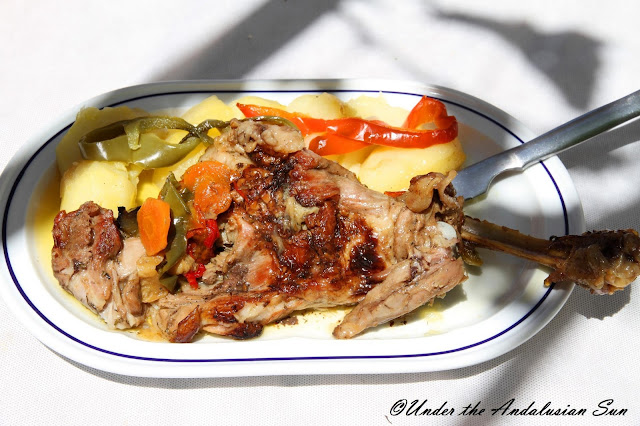Soup Sunday was feeling feverish (and lazy) this week and the inspiration was taken from the pumpkin and morcilla dish we had in El Chorro. I still had some morcilla lurking on the freezer from when I made Fabada Asturiana and this is where it ended its days.
I roasted the pumpkin with the onion and garlic in the oven pepper (175°) sprinkled with oil, salt and pepper as I like the roasting lends to veggies, but you can just as well cube the flesh and cook it in a pan which is a lot quicker way.
Morcilla could be substituted with a robust blood pudding though those with aversion to the elixir of life can also sprinkle some rustic croutons (the nuttiness of whole meal bread works best) and toasted pumpkin seeds (to avoid wasting anything!) in the soup.
For 2
1 pumpkin (appr. 600 g)
1 onion
2 garlic cloves
4-5 dl chicken or vegetable stock
1 tsp cinnamon
1/4 tsp nutmeg
1/4 tsp cloves (or allspice)
salt, pepper
(cream)
(cream)
100 g morcilla or blood pudding OR
1 slice of whole meal bread and the seeds of the pumpkin
1 slice of whole meal bread and the seeds of the pumpkin
Cut the pumpkin in half. Remove the seeds and cut the insides into cubes.Cut the onion into thin rings - save a couple for decoration. Soften the chopped onion and garlic in some oil and add the pumpkin cubes. Let them colour a bit and then add the stock. Cook over simmering heat until pumpkin is cooked (about 15 -20 minutes). Blizz until smooth and season. If you want, add a dash of cream and heat (do not cook).
Fry the morcilla or blood pudding slices until they are crisp on the outside. Fry a couple of onion rings in the fat until soft. Serve with the soup.
If making croutons, cut the bread into cubes. Fry in a bit of oil in a pan until crisp on the outside. Towards the end scatter the cleaned seeds in until they, too, brown a bit.












































.jpg)






